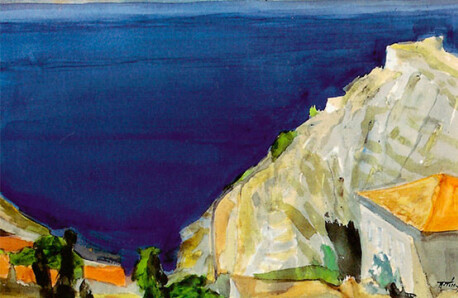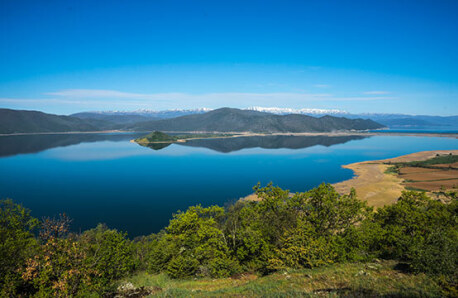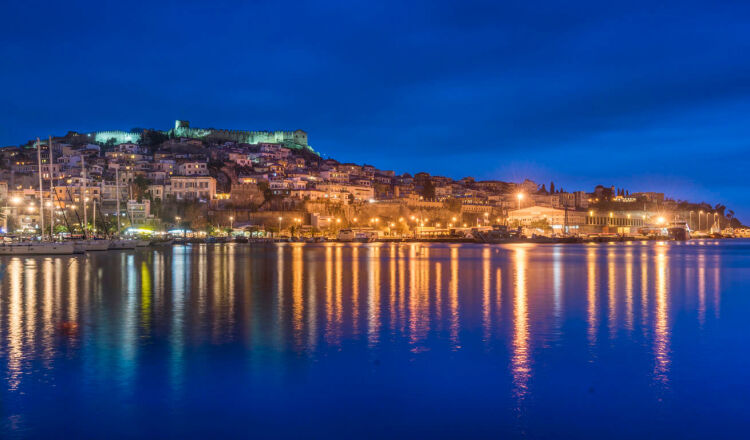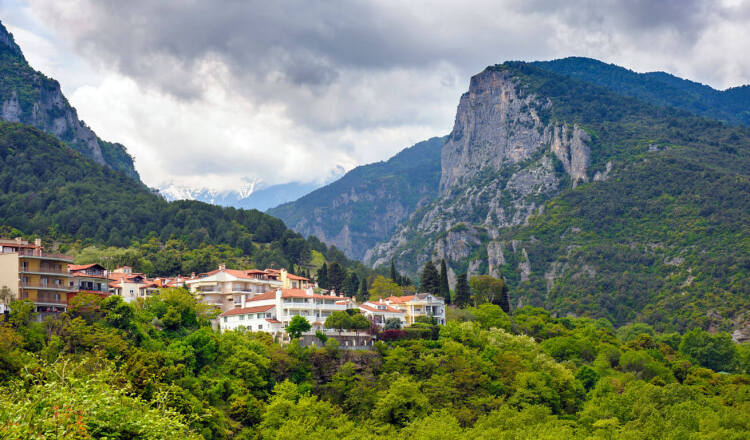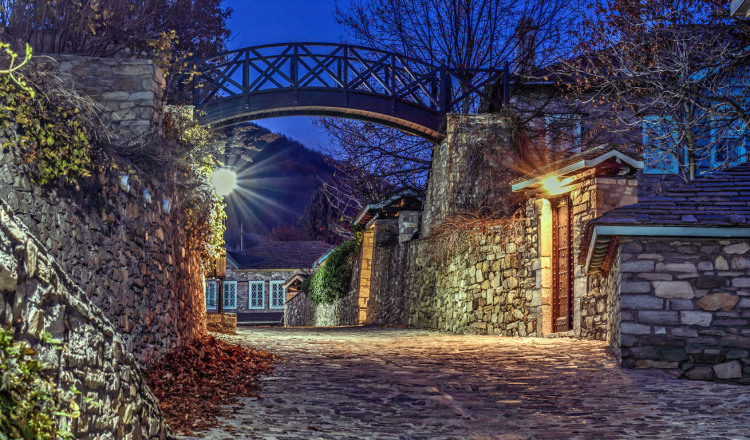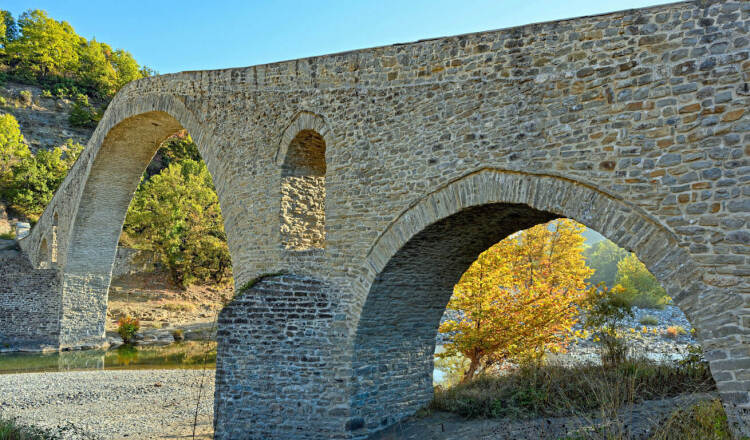
Florina
NOW
4 °C
Next 5 days
-
SAT
7 °C
-
SUN
8 °C
-
MON
9 °C
-
TUES
10 °C
-
WED
9 °C
Climatic Data
Source: National Observatory of Athens /meteo.gr
Unique Experiences
The land of the lakes
Florina
Don’t leave without having bought some of Florina’s exquisite local products, such as Florina red peppers, Prespes beans, mountain tea, spoon sweets and knitted candles made from skillful local candle makers. Last but not least, the ski aficionados can slide down snowy slopes at the Vigla Ski Center at the village of Pisoderi (19 km far from Florina, at an altitude of 1.600-1900 m).Note that all year round joyful events spread a festive alarm all over the city:
- Florina's Fires at midnight on December 23rd at Eroon square.
- The Revival of the "Barbaria" custom on New Year's Day.
- The "Leyistia" are held during the first ten days in August.
Prespes Lakes
Only 45 km west of Florina, on the borders with the Republic of North Macedonia and Albania, lies one of the most important habitats in Greece and the first transboundary protected area in the Balkans. The Prespes National Park is a wetland with rich bio-diversity, whose core covers an area of 4,900 Km2. The wealth of this bio-diversity is perfectly demonstrated by the fact that more than half of birds, amphibians and mammals species found in Greece are encountered here; besides, 9 out of the 23 fish species living in its waters are endemic. A large part of the Prespa National Park was also included in the NATURA 2000 network of protected areas. The Megali (Big) Prespa Lake is the aquatic border between three countries, with its largest part belonging to he Republic of North Macedonia. Its waters communicate with the waters of Mykri (Small) Prespa, from which it is separated by a narrow silted strip of land. The Mikri Prespa belongs almost exclusively to Greece, since the latter shares only a very small part of it with Albania; it also boasts two islets: Agios Ahillios and Vidronisi.On the banks of Megali Prespa you will encounter the traditional village of Psarades, where you can admire traditional houses of Macedonian architecture. Indulge your palate in freshwater fish served by the lake-side tavernas. Rent a boat to take a cruise around the lake and admire the one of their kind “askitaria” (hermit cells) with their stunning 14th-15th century rock paintings. During the Ottoman Empire the natural beauty and isolation of the area attracted many monks who built their hermitages along the shore of the Lake.
South of Psarades, on the NW side of Mikri Prespa Lake, lies the islet of Agios Achilleios, one of the most picturesque places in Northern Greece connected to the shore with a 650 m long floating bridge. It is of the inhabited islands on a lake in Greece, particularly renowned for its Byzantine monuments, among which stands out the three-aisled basilica of Agios Achilleios. Don’t miss “Prespia”, the colourful cultural celebrations held during the third quarter of August on the island! Agios Germanos and the other Prespes villages boasting old churches and traditional stone-built houses are precious gems that also are worth visiting; they are divided in the villages of Pano Prespa Lake (Pylos, Pyxos, and Vrontero) and Kato Prespa Lake (Laimos, Miliona, Plati, Kallithea, Lefkonas, Karyes, Oxia, and Mikrolimni).
Apart from swimming, fishing and rowing, the lake is also ideal for bird watching since there are four observatories in the area (at Koula, Palaia Pyli, Mikrolimni and Vromolimni). Get an adrenalin rush through exhilarating off road routes from Psarades to Pyxos, from Pyli to Daseri (5km), from Oxia to Sfíka (10 km) and from Vrontero to the "Kokkali cave". Try also hiking on Agios Achilleios island, from Mikrolimni to Kranies (duration: 90') and from Psarades to Roti cap and the Metamorfosi hermitage cell - the oldest in the region (duration: 35'). Additionally, the European path E6 passes through Agios Germanos. You can also follow the (difficult) itinerary up to Vigla Pisoderiou (27.5 km long, taking approximately 13 hours).
Florina nature
Nymfaio
Only 53 km far from Florina you will find an outstanding stone settlement perched on the east side of Mt Vitsi, at an altitude of 1,346 m. The village flourished significantly between the 17th and 19th century, when it was an important centre of gold and silver trade, while its inhabitants were prominent merchants abroad. For many years the settlement had been abandoned but thanks to a coordinated effort from local people and the state, it managed to regain its lost glory. Today it forms one of the most impressive officially proclaimed by the Ministry of Culture and Tourism traditional settlements.Glorious mansions (Boutari, Missiou, Mertzou, Tsirli, Papadopoulou etc) bear testimony to the village’s distant past while Agios Nikolaos Church and Nykios School, which now houses the conference and training centre of the Thessaloniki Aristotle University, and the Community are architectural gems that you should not miss out on. Here are some other suggestions: Tour the Gold- and Silversmith, Folk Art and History Museum, hosted in the Neveska Chrisikos House (the village's former name) and peer into the village’s long gold and silversmith tradition or follow a hiking route along the stone paved path to Sklithro and Agrapidia and let yourself experience a journey through time....
Nymfaio is particularly famous for the "Arcturos Environmental Centre” (at Aetos village), an institution founded for the preservation of the natural environment. "Arcturos" comprises a brown bear sanctuary for abused bears that can no longer survive on their own and a wolf sanctuary in Agratida (12 km E). With more than 50.000 visitors each year, the Centre has become the landmark of Nymfaio; its objectives include raising public awareness on environmental issues and promoting the sustainable development of the wider region. On a close distance you will also find the lakes Himaritida and Zazari, important natural habitats for a significant number of mammals, amphibians, fish and bird species.
In the area of Nymfaio you can pursue exhilarating activities such as mountain climbing, off road routes, bird watching at the lakes, hiking (from the village's parking site to the Profitis Elias chapel-duration 50'- and from the village square to Drosopigi- duration 4 hours) and mountain biking (to Drosopigí and Flórina city)!

BY CAR
From Athens via PATHE (Athens-Thessaloniki), take the exit for Egnatia Odos and continue to Florina, the journey is 6.5 hours. From Thessaloniki via Egnatia Odos, the journey takes about 2.5 hours.





